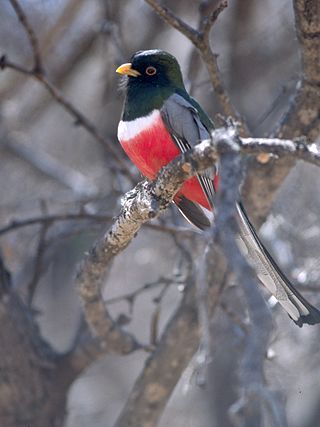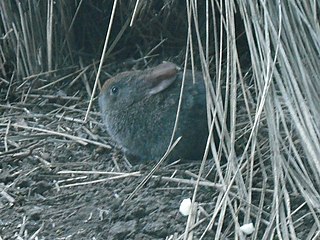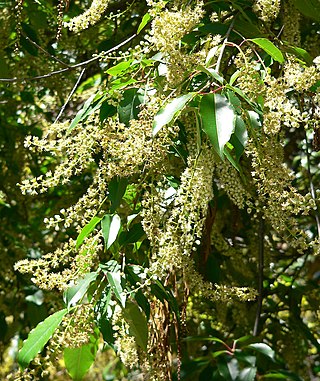
The trogons and quetzals are birds in the order Trogoniformes which contains only one family, the Trogonidae. The family Trogonidae contains 46 species in seven genera. The fossil record of the trogons dates back 49 million years to the Early Eocene. They might constitute a member of the basal radiation of the order Coraciiformes and order Passeriformes or be closely related to mousebirds and owls. The word trogon is Greek for "nibbling" and refers to the fact that these birds gnaw holes in trees to make their nests.

Quetzals are strikingly colored birds in the trogon family. They are found in forests, especially in humid highlands, with the five species from the genus Pharomachrus being exclusively Neotropical, while a single species, the eared quetzal, Euptilotis neoxenus, is found in Guatemala, sometimes in Mexico and very locally in the southernmost United States. In the highlands of the states of Sonora, Chihuahua, Sinaloa, Durango, Nayarit, Zacatecas, Jalisco, and Michoacán, the eared quetzal can be found from northwest to west-central Mexico. It is a Mesoamerican indigenous species, but some reports show that it occasionally travels and nests in southeastern Arizona and New Mexico in the United States. June to October is the mating season for eared quetzals. Quetzals are fairly large, slightly bigger than other trogon species. The resplendent quetzal is the national bird of Guatemala because of its vibrant colour.

The resplendent quetzal is a small bird found in southern Mexico and Central America that lives in tropical forests, particularly montane cloud forests. They are part of the family Trogonidae and have two recognized subspecies, P. m. mocinno and P. m. costaricensis. Like other quetzals, the resplendent is mostly omnivorous; its diet mainly consists of fruits of plants in the laurel family, Lauraceae, but it occasionally also preys on insects, lizards, frogs and snails.

The wildlife of Costa Rica comprises all naturally occurring animals, fungi and plants that reside in this Central American country. Costa Rica supports an enormous variety of wildlife, due in large part to its geographic position between North and South America, its neotropical climate, and its wide variety of habitats. Costa Rica is home to more than 500,000 species, which represent nearly 5% of the species estimated worldwide, making Costa Rica one of the 20 countries with the highest biodiversity in the world. Of these 500,000 species, a little more than 300,000 are insects.

The military macaw is a medium-sized macaw that gets its name from its predominantly green plumage resembling a military parade uniform. It is native to forests of Mexico and South America and though considered vulnerable in the wild, it is still commonly found in the pet trade industry.

The golden-headed quetzal or corequenque is a strikingly coloured bird in the genus Pharomachrus. It is found in moist mid-elevation forests from eastern Panama to northern Bolivia.

Agave lechuguilla is an Agave species found only in the Chihuahuan Desert. The plant flowers once in its life and then dies.

The elegant trogon, previously known as the coppery-tailed trogon, is a near passerine bird in the trogon family native to Central America. The etymology of the word trogon comes from the Greek word trōgein, meaning "to gnaw", which describes how this species prepares its nests in trees.

The volcano rabbit, also known as teporingo or zacatuche, is a small rabbit that resides in the mountains of Mexico. It is the world's second-smallest rabbit, second only to the pygmy rabbit. It has small rounded ears, short legs, and short, thick fur and weighs approximately 390–600 g (0.86–1.3 lb). It has a life span of 7 to 9 years. The volcano rabbit lives in groups of 2 to 5 animals in burrows and runways among grass tussocks. The burrows can be as long as 5 m and as deep as 40 cm. There are usually 2 to 3 young per litter, born in the burrows. In semi-captivity, however, they do not make burrows and the young are born in nests made in the grass tussocks.

The hooded skunk is a species of mammal in the family Mephitidae. Mephītis in Latin means "foul odor", μακρός (makrós) in Greek translates to "long" and οὐρά (ourá) translates to "tail".

The eared quetzal, also known as the eared trogon, is a near passerine bird in the trogon family, Trogonidae. It is native to streamside pine-oak forests and canyons in the Sierra Madre Occidental of Mexico south to western Michoacán, and southeasternmost Arizona and New Mexico in the United States. This range includes part of the Madrean Sky Islands region of southeastern Arizona, southwestern New Mexico, and northern Sonora.

The crested quetzal /ketSAHL/ is a species of bird in the family Trogonidae native to South America, where it is found in Bolivia, Colombia, Ecuador, Peru, and Venezuela. Its natural habitat is subtropical or tropical moist montane forests.

The white-tipped quetzal is a species of bird in the family Trogonidae found in Venezuela, Colombia, and Guyana. Two subspecies have been described. Pharomachrus fulgidus fulgidus is found in the mountains of northern Venezuela and Pharomachrus fulgidus festatus ranges through the Santa Marta mountains of northeast Colombia. Quetzals are iridescent and colourful birds found in forests, woodlands and humid highlands. The white-tipped quetzal has been a limited subject of research. Pharomachrus nests have been studied to analyse the effects of rainfall on breeding, however conclusions are based on single observations. On the IUCN Red list of threatened species, the white-tipped quetzal is listed as a species of least concern.

The pavonine quetzal is a species of bird in the family Trogonidae, the trogons. It is also known at the peacock trogon, red-billed train bearer, or viuda pico rojo in Spanish. The pavonine quetzal lives in the Neotropics, more specifically in the northern region of the Amazon basin, spreading from Colombia to Bolivia. The most notable characteristics helpful in identifying this bird are its plumage, red beak, and its distribution - it is the only quetzal occupying the lowland rainforest east of the Andes.

Nectandra is a genus of plant in the family Lauraceae. They are primarily Neotropical, with Nectandra coriacea being the only species reaching the southernmost United States. They have fruit with various medical effects. Sweetwood is a common name for some plants in this genus.
The Zoológico Miguél Álvarez del Toro (ZOOMAT) is a Mexican zoo located in Tuxtla Gutiérrez, Chiapas. It was founded in 1942 as Zoológico de Tuxtla Gutiérrez. It was renamed after its director Miguel Alvarez del Toro and relocated in 1981. Currently, it is located in a nature reserve known as El Zapotal. The altitude is 630 metres (2,070 ft) and the annual mean temperature is 24.7Cº. The main characteristic of the zoo is that it only exhibits endemic fauna.

Ficus aurea, commonly known as the Florida strangler fig, golden fig, or higuerón, is a tree in the family Moraceae that is native to the U.S. state of Florida, the northern and western Caribbean, southern Mexico and Central America south to Panama. The specific epithet aurea was applied by English botanist Thomas Nuttall who described the species in 1846.

Dioon purpusii is a cycad tree endemic to a very small region in Mexico. It is found in Tomellín Canyon and the eastern branches of La Cañada de Cuicatlán.

Prunus brachybotrya is a species of tree in the family Rosaceae. It is native to Mexico. Individuals have been found growing in Central American countries. The resplendent quetzal has been observed feeding on this tree.
Beaucarnea purpusii is a tree in the family Asparagaceae, native to Mexico. It grows up to 8 metres (30 ft) tall.


















